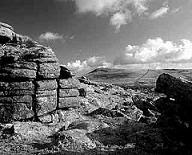Tips & Techniques from Duchy Square Centre for Creativity.
Being able to capture the likeness of a human being on canvas, using paint, is certainly a sought after accomplishment for many new painters. It can also be somewhat challenging. This article will cover some of the more basic portrait painting tips & techniques and help lessen some of the confusion many beginners face. With practice, you will soon be painting portraits like the masters.
If at all possible, I highly recommend you paint your portraits using a live model as opposed to a photograph. There is simply no substitution for painting from life.
Painting a successful portrait is all about how you observe the subject. You want to study the subject as a whole. Study the bone structure and try to see shapes and planes. Do not try and paint every little detail exactly as you see it.
For beginners, it is probably best to start out with a lighting effect where light and shadow are in high contrast. This will make for a much easier painting.
Focus on one section at a time. Finish each section before moving on to the next.
Keep the darks of your portrait at a thin consistency while your lights should be painted on thickly.
Many beginners struggle with mixing flesh tones, I know I did when I first started painting. Remember that skin comes in a variety of colors & textures, so there is no specific formula for mixing flesh tones in portrait painting. You will have to experiment and practice, until you find the right color mixtures for any particular subject. Never purchase any pre-mixed flesh colours. When mixing your colours be careful not to over mix, which can deaden a colour.
Try and repeat the colours and values in your painting to create balance.
When painting hair, don't try and paint every individual strand of hair. Look at the hair as one object and then paint the lights and darks. Paint the hair in the direction of the shape of the head.
The muzzle area of the face (the space between the nose and mouth) is generally the same colour as the flesh but cooler.
When painting backgrounds, don't make them too detailed or busy. If you do, you will draw focus away from your portrait.
Add bits of colour where the shadow meets the light in your portraits.
Fleshier parts of the face are generally warm and bonier parts of the face, like the chin for instance, are generally cool in colour.
The white in the eye is not white. To get an accurate colour for the white in the eye you can take the subjects basic flesh colour and then lighten it with a gray made from black and white.
I hope these portrait painting tips & techniques have helped. Portrait painting can be difficult, possibly even frustrating in the beginning. Never give up and keep practicing. You will get the hang of it.
For details of courses and workshops available at Duchy Square, please visit our website.
Subscribe to:
Post Comments (Atom)

No comments:
Post a Comment